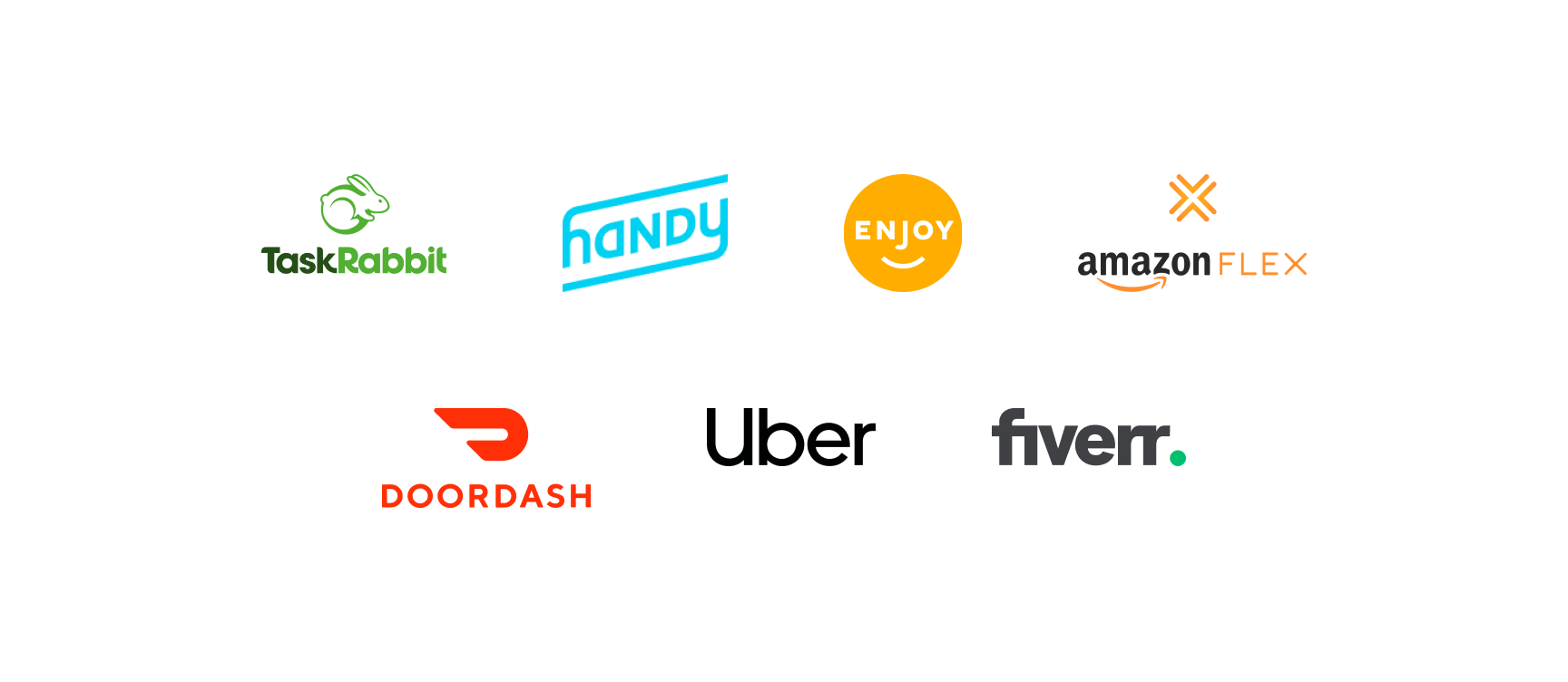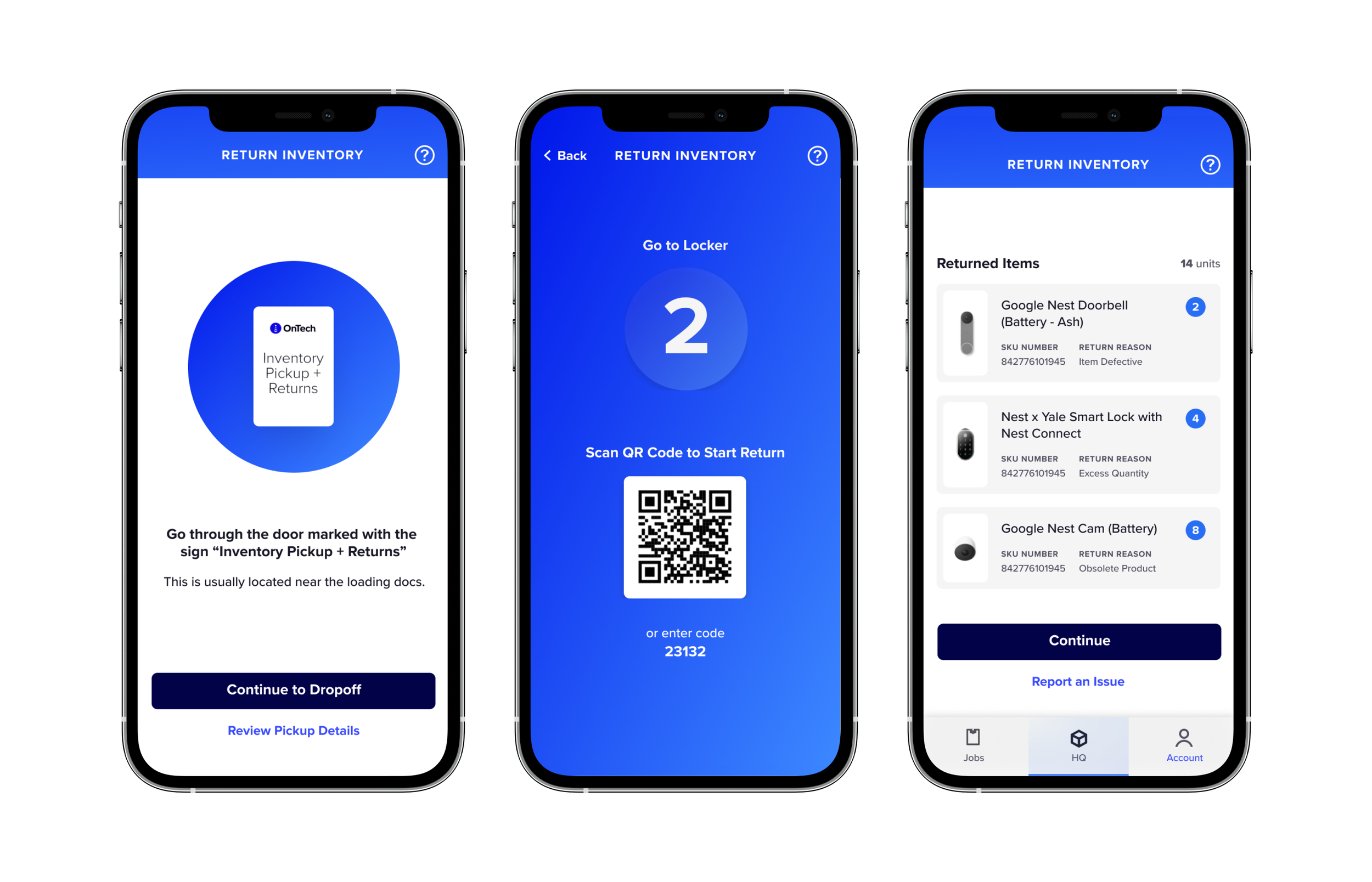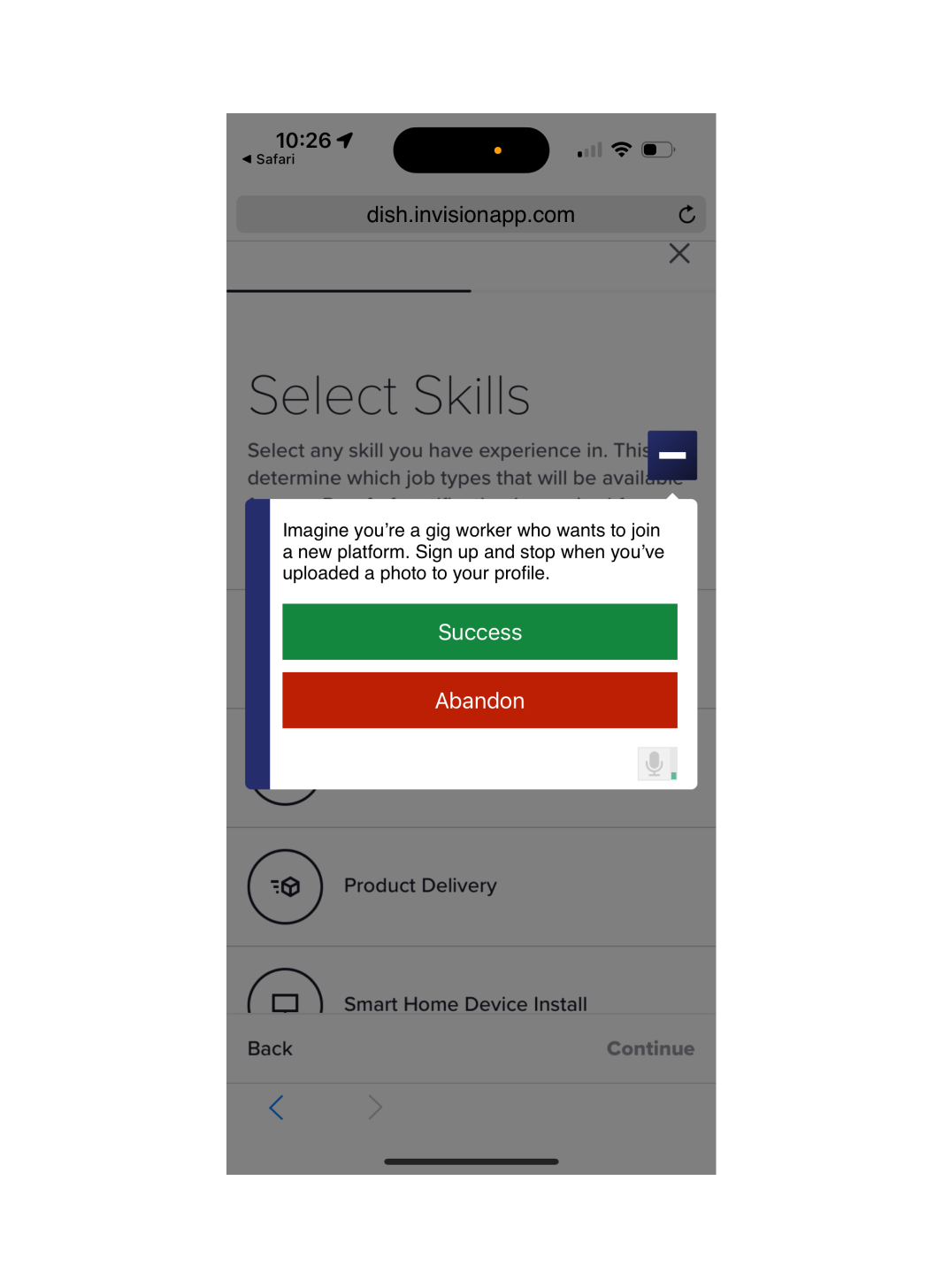OnTech Pro
OnTech Pro is a gig-economy app focused on opening a lane for electricians, Smart Home technicians, and delivery drivers to work on their own terms. With OnTech Pro, experts can control their own schedule, work where they want, and get paid instantly.
October 2021 - June 2022 | OnTech
THE CHALLENGE
01. Partners like Google want OnTech to be able to install their entire product line.
More installations = more products sold. However, certain products require specialized skills and certifications so they can be installed safely. OnTech currently has several areas where they can service electrical work orders, but this skill set is relatively limited in the existing workforce.
02. Our digital-only wireless brands are looking to offer phone delivery services, powered by OnTech.
Rolling a vehicle with a ladder and a tech with a lot of experience and training isn’t profitable if they are just going to deliver a device. These jobs can be done by those with fewer technical skills.
03. Hiring is hard. Retaining is harder.
People including a lot of skilled technicians, want more flexibility in their employment. This could be an opportunity to provide win-win relationships with technicians around the country.
THE PROCESS
Utilizing an agile Scrum framework, our team engaged in iterative cycles lasting two weeks each. The collaboration between the researchers and designers was seamless, marked by a shared sense of responsibility. The process started with a general idea of what needed to be designed based on stakeholder input and as research was conducted, the team systematically identified and prioritized a backlog of features to delve into and design.
Competitive Analysis
In the initial stages of our exploration process, we initiated a thorough competitive analysis. Our assessment encompassed a comprehensive review of seven competitors, both direct and indirect. The primary objective was to evaluate the strengths and weaknesses of these competitors, thereby pinpointing strategic opportunities for our own advancement.

Stakeholder Interviews
As the product roadmap and backlog took shape, we undertook multiple stakeholder interviews within the organization to gather pertinent information and suggestions for the project. These stakeholders possessed valuable knowledge, wisdom, and insight, contributing significantly to our team's ability to make crucial product decisions.
Key Areas of Focus
Job process
Incentive structure
Inventory
Training
High-Impact Feedback
A need for structured workflow in the home
Incentives based on customer reviews, time to complete, and products installed
Autonomous inventory management
One-minute sign-up, ten-minute training
Action Items
Step-by-step installation guide
Transparent incentives baked into the payment system
User-managed inventory with smart suggestions
Fast sign-up that allows users to quickly browse jobs
User Flows
This process began by examining current product flows and working through and identifying optimized paths. We delineated and defined our envisioned user experience before proceeding to craft wireframes and prototypes for validation. Flows prove to be a highly effective method for segmenting and defining the user experience, providing insights into the screens users typically encounter during product interactions and their patterns of engagement.
Information Architecture
Significant effort went into constructing a user-friendly and logically organized information system, with metadata structure and sorting playing pivotal roles. Key job details such as time, location, and payment were extracted from datasets and consolidated into a unified card, presenting comprehensive job information. To ensure a sensible hierarchy aligning with user perspectives, we conducted surveys, card sorting, usability testing, and A/B tests.
Surveys
In our initial exploration process, we were interested in examining the background, priorities, and motivations of gig workers within the United States. We surveyed 200 gig workers with a 15-question survey consisting of multiple choice questions, satisfaction rating, true/false, and open-ended questions.
Sample questions
How many companies do you do contract work for?
What would motivate you to spend time working for one more than another?
What would be your ideal payment schedule?
Card Sorting
We wanted to identify information that gig workers prioritized when reviewing potential jobs. We researched demographic information for gig workers in the United States for the last five years. We then created a lookalike audience to test with. Annual income, age, gender, employment status, industry, and job title were variables we used to control and build our lookalike audience. We conducted a card-sorting test with 15 participants. We compared our results with our stakeholders and legal requirements to design a job card that best met the needs of all parties with an emphasis on gig workers.
A/B Testing
Refining layouts through iteration entailed the creation of various designs, each subjected to rigorous testing for effectiveness. Conducting multiple A/B tests, our team systematically determined the best approach for presenting information from the user's perspective.
Usability Testing
Our team implemented regular usability testing to quickly iterate on wireframes. The consistent feedback allowed us to make rapid changes that were validated by actual users. This would give our layouts a solid foundation of patterns to build upon for our new features.
MY CONTRIBUTIONS
I managed the team of Product Designers and UX Researchers who led this large initiative. I coached them on designing technically difficult concepts and integrating those products into overall business goals, helped them bridge product and brand design, and ultimately helped guide them in the product development lifecycle.
While OnTech Pro did not initially launch in this exact format, external factors led to pivots that fundamentally reshaped the product's trajectory. The team gleaned invaluable insights from their experiences, leveraging UX research, field analysis, and digital product design to craft an innovative tech and customer-centric solution: In-Home Commerce. Though the original plan of engaging independent gig workers evolved, the team successfully developed a suite of applications that addressed critical needs:
Pre-appointment Customer Onboarding
The team implemented an intuitive onboarding experience for customers before appointments. This facilitated technicians in understanding the specific smart home ecosystem the customer-owned or aspired to create, enabling our inventory teams to stock trucks with precisely matched complementary products.
Tablet Experience for Live Catalog Browsing
Customers gained access to a tablet interface featuring a live catalog of products that technicians could install on the spot. This streamlined the upselling process, resulting in a remarkable 10% increase in the average order value of on-site sales.
Enhanced White Glove Experience
The project also introduced a more comprehensive white glove experience, attracting at least 5 new partners. Some partners even expanded the concept of smart homes into the electric vehicle space, broadening the scope of possibilities.
Not every project unfolds as anticipated, but this journey served as a phenomenal learning experience in building a resilient team capable of adapting to unexpected challenges. Ultimately, the product significantly enhanced the in-home experience for both customers and technicians alike.

One of the toughest challenges the team faced was how to get independent contractors the inventory they needed with minimal human intervention and a relatively easy experience. We capitalized on our brick-and-mortar warehouse locations and designed out a locker pickup system.

Through our UXR, we determined rewards and incentivization were a critical component of gig platforms. Partnering with our existing field incentive teams and existing tech stack, we interfaced a unique reward system that incentivized our techs to continuously prioritize performance and in-home experience.

Customer and tech safety and security was critical. How was a customer supposed to know and trust the tech in their home? Thankfully many other gig platforms have broken that barrier down quite a bit, but with the help of an OnTech digital ID badge and a cost effective uniform, we hope to create a more personalized and official experience in home.



